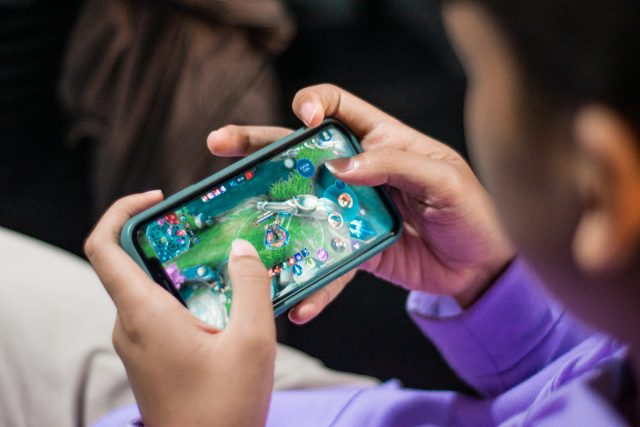
It wasn’t that long ago when gaming was mostly tied to home consoles, PCs, or coin-operated arcades. Fast forward to today, and mobile games are everywhere, on the bus, in cafes, during lunch breaks, and even while waiting in line. What once required a controller and a TV now fits in the palm of your hand. This shift isn’t just a passing trend. Mobile gaming has fundamentally changed how people consume entertainment.
Let’s explore what made this transformation possible, and why mobile games have become such a dominant force.
The Power of Accessibility
One of the biggest reasons for mobile gaming’s rapid rise is its sheer convenience. Smartphones are already part of daily life. Most people carry them all day, so adding entertainment into that mix becomes effortless.
There’s no need for separate gear, long downloads, or sitting at a desk. You can dive into a game in seconds, whether it’s a five-minute puzzle or a more intense RPG session. This drop-in/drop-out style fits modern routines perfectly.
Even users who don’t consider themselves gamers are playing something. Whether it’s a brain teaser app, a digital card game, or a quick daily quiz, mobile gaming has widened the definition of who a “gamer” is.
Free-to-Play and Micro-Innovation
Cost plays a huge role in mobile gaming’s appeal. Many of the most popular titles are free to download. That low barrier to entry is enticing, especially when compared to the price tag on traditional games.
Of course, these games make money through microtransactions and in-game purchases. While this model has drawn criticism in some circles, it’s also sparked a wave of innovation. Developers constantly tweak mechanics to balance enjoyment and monetization. Games like Clash of Clans, Candy Crush Saga, and Genshin Impact have shown that strong design can live within a free-to-play framework.
Constant Updates Keep It Fresh
Mobile games rarely stay static. Developers push frequent updates, seasonal events, and limited-time challenges. These additions keep players engaged and curious. They’re also a powerful tool for building long-term communities.
For instance, titles like Pokémon GO evolve with real-world holidays, weather conditions, and social dynamics. The game you play today may look and feel different just a month later. That kind of content flow simply doesn’t exist in most traditional media.
Social Gaming in Your Pocket
Another reason mobile games have gained ground is their natural integration with social features. Most titles are built to be shared. You can invite friends, compete in leaderboards, or team up in co-op play.
Even casual puzzle games offer social hooks, like sending lives to friends or competing for weekly high scores. Multiplayer hits like Among Us or Brawl Stars show how mobile gaming can match the intensity of console experiences, without the commitment.
These interactions also bring gaming into conversations. People talk about the games they’re playing much like they would discuss TV shows or sports. That chatter fuels interest and keeps the cycle going.
Diversity of Genres and Experiences
Mobile gaming isn’t a one-size-fits-all experience. The app stores are packed with every genre you can imagine: platformers, tower defense, strategy games, simulations, and more. There’s something for every taste.
What’s more, many developers now tailor games for very specific audiences. There are games for commuters, parents, students, and professionals. Not all mobile games are fast-paced or simple, either. Some offer rich narratives, complex systems, or immersive world-building.
Even online casino games have secured a solid presence in the mobile space. Pikakasino platforms allow users to access everything from classic slot machines to immersive live dealer games, without the need for lengthy sign-ups or downloads. This level of instant access expands the genre diversity, giving users the flexibility to enjoy quick sessions or dive into more involved gameplay, depending on their preferences and schedule.
Thanks to this wide variety, mobile games often feel more personal. People gravitate toward games that fit their style, mood, or time constraints. That connection keeps them coming back.
Influencers and Viral Culture
You can’t overlook the impact of influencers and viral content. Mobile games often explode thanks to a few viral videos or a strong community around a particular game.
TikTok, YouTube Shorts, and Instagram Reels have become discovery tools for mobile games. One quick clip of a new mechanic or an impossible level can spark millions of downloads.
This viral potential gives indie developers a real shot at competing with established studios. A single creative twist, if shared widely, can make a game a household name.
The Technical Evolution of Smartphones
It’s also important to credit the devices themselves. Modern smartphones are more powerful than ever, with fast processors, vivid displays, and advanced touch controls. Games that once needed high-end consoles can now run smoothly on a mid-range phone.
As mobile hardware continues to evolve, developers are pushing boundaries with 3D graphics, motion sensors, and even AR features. The gap between mobile and console performance is closing quickly, and it’s reshaping what people expect from handheld gaming.








